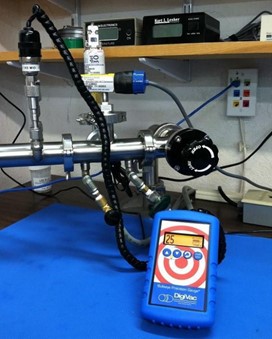
If there’s one maintenance task that will make sure your digital vacuum gauge keeps working correctly, it’s calibration. You want to make sure that your vacuum gauge is consistent and reliable. And that the vacuum instrument is providing you with accurate information about the functioning of your system.
Thermal sensors have unique properties that can create slight changes in the measurement readings over time. Without proper calibration, your vacuum pressure gauge readings may be off which could have a negative impact on the end results of your application. We’re going to show you when to calibrate a vacuum pressure gauge so you can be confident that you’re getting the most out of it.
Manufacturer’s Recommended Interval
It should come as no surprise that the best time to calibrate your vacuum pressure gauge is in line with the manufacturer’s recommendations. Not all gauges need calibration at the same intervals of time.
We recommend that your vacuum gauge or vacuum controller be calibrated on an annual basis, but it may need to be done more often. Life sciences and cGMP laboratories are required to maintain tight specifications, which could necessitate calibration on a much more frequent basis.
The decision to calibrate a gauge should be made by the user based on usage, possible contamination, and procedural obligations. When foreign matter comes in contact with the sensor, it alters the sensor characteristics. Those altered characteristics will yield a different pressure measurement over time.
After an Unexpected Accident
Accidents happen in a lab—it’s just an unfortunate fact of life. If something goes wrong and your vacuum pressure gauge gets jostled, falls off something, or has something crash into it, it’s a good idea to have it checked and calibrated in our lab to make sure that a repair or tube replacement doesn’t need to be done. These are sensitive pieces of equipment and an unexpected accident could potentially alter its results.
Before an Important Measuring Project
If it’s been a while since the last time you calibrated, but you have a critical project coming up that needs accurate measurements, that’s the right time to calibrate.
After Possible Contamination
If your process is dirty or you are boiling off a lot of solvents, your sensor could become contaminated which will affect its results. If you have tried to clean the sensor and you still aren’t getting the results that you would expect then its time to calibrate. You could try swapping out the tube and see if your readings go back to what you would expect but know that it could affect the accuracy of the gauge. In our research, swapping sensors on a gauge without calibration could cause the readings to be off by up to 20%. If you have determined that it is the sensor, send in the gauge as soon as you can for calibration to help make sure you are getting accurate results.
Your Vacuum Readings Seem Off
We recommend trouble shooting first. Step 1: Clean your sensor. Digivac provides proper cleaning procedures on our site. Step 2: We recommend comparing to a known good vacuum gauge to see if there’s a discrepancy. Step 3: Make sure you have the sensor installed properly and there isn’t a leak in your vacuum system Do your readings still seem off? Then it is time to send it in for calibration.
DigiVac is the name to turn to when you need an accurate digital vacuum gauge. Every gauge and vacuum controller that leaves our factory is tested under actual vacuum on our validated manifold and will be calibrated against a NIST traceable standard (NIST certified calibrations are also available). At DigiVac we calibrate each sensor to the gauge so that they are a mated pair and will be consistent with our published accuracy specifications.
If it is time to recalibrate your vacuum gauge we are here to help! DigiVac provides professional vacuum controller and vacuum gauge calibration services for the research and processing industries, which are led by DigiVac’s vacuum calibration experts.

